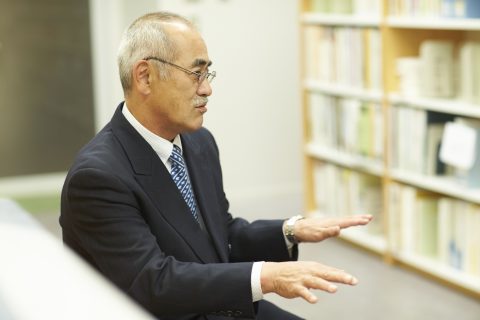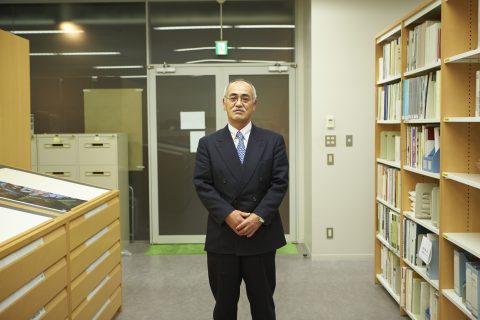
Column文化遺産コラム
Keeping the flame of hope alive in a critical situation
10.10.2017
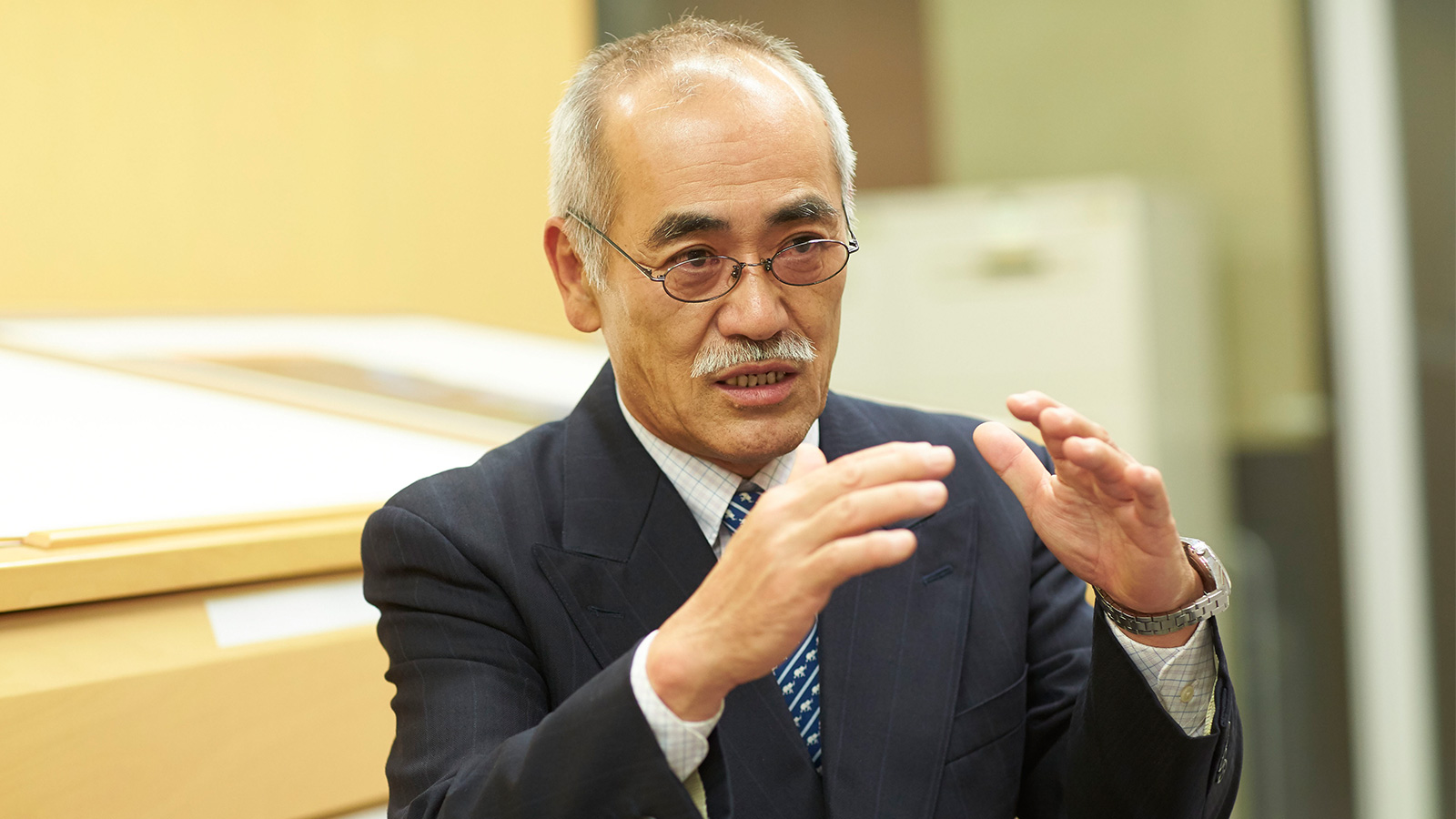
Interviewee Kiyohide SAITO
Keeping the flame of hope alive in a critical situation
Member, Subcommittee for West Asia, Japan Consortium for International Cooperation in Cultural Heritage
A specialist in archeology of West Asia, Mr. Saito served previously as Deputy Director of the Archaeological Institute of Kashihara and as Chief Curator of the Institute’s Museum. For the 22-year period from 1990 through 2011, he visited Palmyra, Syria every year to take part in excavation of tombs along with their recovery and restoration.
Latest news
Palmyra ruins destroyed by the extremist group IS
-
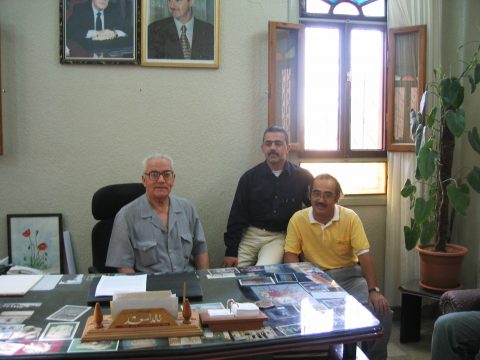
Mr. Khaled al-Asaad(the leftmost) at director's office of Palmyra Museum
After surviving for millennia, the site of Palmyra were destroyed summarily by IS. As somebody who had continued to study them for more than 20 years, I was at a loss for words to describe my shock at hearing of their destruction. Of course the destruction of the site was a major shock, but even worse was the earlier news of the murder of Khaled al-Asaad, known as the “father of Palmyra.”*
* Also known by the sobriquet “Mr. Palmyra,” Mr. Asaad devoted his life to the study of Palmyra, on which he was the leading expert. In 2015, he was captured by IS and murdered in a public execution. Nations around the world denounced his murder and expressed their remorse.
I had worked on projects to restore two tombs in Palmyra. The restored tombs were plundered. While they had been damaged by grave robbing before, this time the plundering was conducted on a massive scale, using excavators and other heavy equipment. If asked why this plundering took place, the main reason was the need for a livelihood. Palmyra is like a landlocked remote island, and its people have no sustenance if it is cut off from the outside world. That’s why they targeted cultural heritage with monetary value.
The key
Preserving ties with the people of Syria and the accumulated results of research
It seems to me that the people of West Asia, including Syria, are highly sympathetic to the Japanese people. This is because they consider themselves to be people of Asia. While it may be true that historically they have had stronger ties to Europeans, for some reason they seem ultimately drawn closer to us Japanese. I had this experience repeatedly through my excavation and restoration work conducted over nearly 20 years. For this reason, it is important that we do not forget about them. The words I heard once are engraved in my memory: “Do not forget about us. That’s what keeps us going.” In this since, the people of West Asia look at Japan from a vantage point that differs from that of Europe and the Americas. They pay close attention to the statements of the Japanese government and the Consortium, to an extent even greater than Japanese people imagine.
The meaning of Restration
Restoring two underground tombs
-
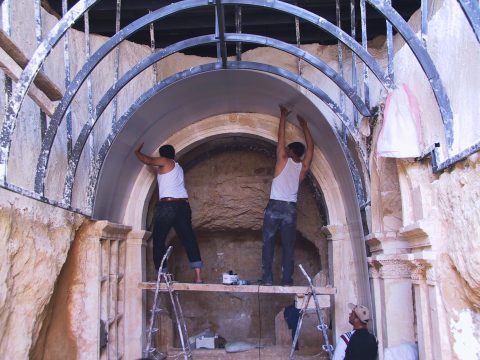
Restoration of Tomb H
I worked in excavation and restoration in Palmyra from 1990 through 2011. During that period, we restored two underground tombs. One was restored with the support of Nara Prefecture, and the other with the support of the Sumitomo Foundation. Back then, the Consortium had not yet been established. Restoration of a tomb generally involves activities like excavating and reinforcing it and then returning the statues from the tomb to their original locations. In doing so, there are two main courses to take in restoration work: reproducing the original feel using the same materials as the original as much as possible or clearly indicating the differences between originals and restored works so that it is understood what has been restored.
For the first underground tomb we restored in Palmyra, we stressed restoring it to be as beautiful and faithful to the original as possible, while for the second we employed a restoration method that made the process of excavation itself clear. We left damaged portions in their damaged state, to the extent that no danger was involved. While the act of restoring the tombs and making them available for the public to view does involve some aspects of entertainment, I think that this also served as an opportunity to let people know about the profundity of excavation work and how there are various ways of thinking about restoration.
On the Consortium
Keeping the flame of hope alive in a critical situation
I think that we need to think seriously about how we can protect researchers and related parties and educate people uninterested in the value of artifacts as cultural heritage when a critical situation like that of Syria arises. When thinking about the eventual return of refugees to their home countries as well, whether or not tourism resources have been preserved can have a serious economic impact. I would like to raise awareness of this through the Consortium and to encourage action by government as well.
The same applies to traditional techniques and culture too, not just to ruins. There are various and diverse techniques across Syria, such as silk and metalwork in Damascus. Many refugees have abandoned these techniques. I would like the Consortium to encourage activities to support such people and to take action to preserve the intangible assets of traditional culture.
There also is a need for action to continue research on West Asia in Japan. At this point, there is a danger that the research accumulated through now could be forgotten. Although not a day passes in which we do not hear any news about the Middle East, if the news is dominated by information that describes it as a dangerous region with an unusual culture, and a place that is difficult to enter, then the number of people who feel motivated to study it is likely to decrease. The concern that university and government research institutions could disappear and in 30 or 40 years nobody would be studying the cultures of West Asia is no exaggeration.
Behind my current research
I’ve grown accustomed to deserts and excavating tombs
-
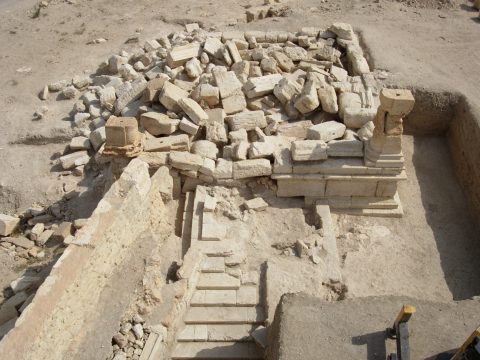
Excavation of No. 129-b House Tomb
I am not a specialist in either Western or Eastern history. I originally did my research at a university in Arizona. It was only by chance that I first went to Palmyra. At the time, Nara Prefecture was borrowing artifacts from Palmyra for display in an exhibition on the Silk Road, returning them after the exhibition was over. Institute Director Takayasu Higuchi (Professor, Faculty of Letters, Kyoto University/Director, Archaeological Institute of Kashihara, Nara Prefecture/Director, Research Center for Silk Roadology) asked me to conduct an excavation study as part of these activities. I think he asked me because he thought that since I was working on excavation of ancient burial mounds for the Institute I must have been an expert on tombs, and since I had lived in Arizona I must be used to the desert. But he was not necessarily mistaken. Excavation studies are grueling work. I think I was able to keep up with the work because I was used to living overseas and taking part in outdoor activities.
This cultural heritage is my life!
The mysterious nighttime in Palmyra is like being on a tropical island
It goes without saying that the ruins to which I have devoted the greater part of my life are those of Palmyra. The vast ruins soar above the region, which has built up over an uninterrupted history spanning several millennia. I still remember clearly my first view of Palmyra. Located in a desert region—to be more precise, a soil-covered region in a rocky desert—after departing from Damascus one starts to see the tips of the ruins ahead after traveling through only about 20 km of date palm woods.
When falling asleep at night in Palmyra, you can hear a sound like rippling waves. It sounds just like water, but really it’s the sound of the night desert breeze shaking the date palm trees. There’s also a sound like the gentle beating of drums. It’s the intermittent sound of the pumps delivering water to irrigate the fields. As you close your eyes, it feels eerily comfortable, like imagining you have arrived on a tropical island.
Of course, when you awaken, you are surrounded by a severe environment of bare soil and rocks. But a night spent in the desert is quite beautiful.
My next destination
I will continue my research on Palmyra
My plan for the future is to gather data to make it possible to recover Palmyra’s ruins. Of course, the actual decision on whether or not to restore or recover the ruins is to be made by local Syrians when the time comes. But whatever the case, I want to start by doing whatever I can to enable the ruins’ recovery when the time comes.
Also, right now I am studying the vestiges of the Palmyrene people in Bahrain. It is thought that some of the people of Palmyra had relatively high status as island officials in Bahrain. It seems to me that there must be some Palmyrene tombs on Bahrain. While the Palmyra region has high fluorine and fluorite content, there is not that much Fluorite on Bahrain. I think that this could serve as a clue in searching for Palmyrene tombs if we were able to excavate human bones from 1500 B.C. My research on Palmyra still continues.


